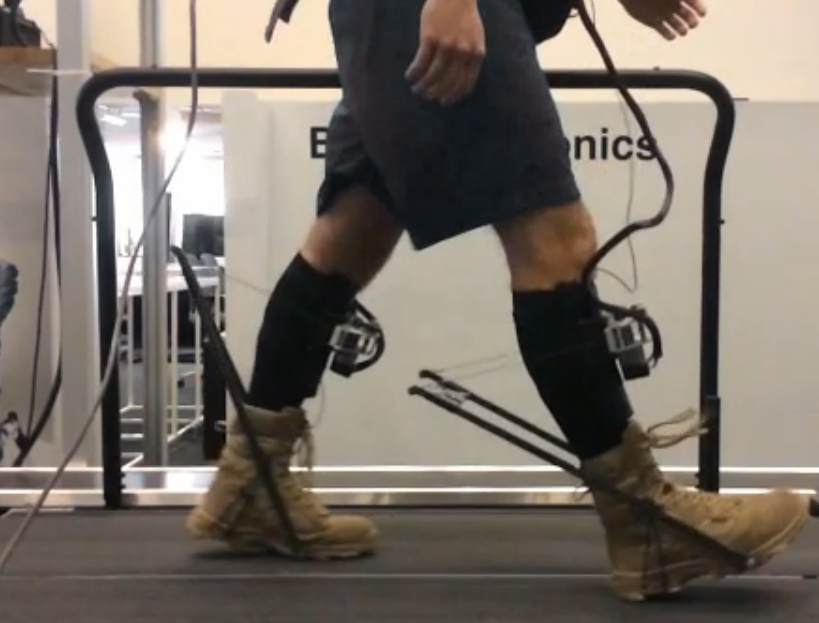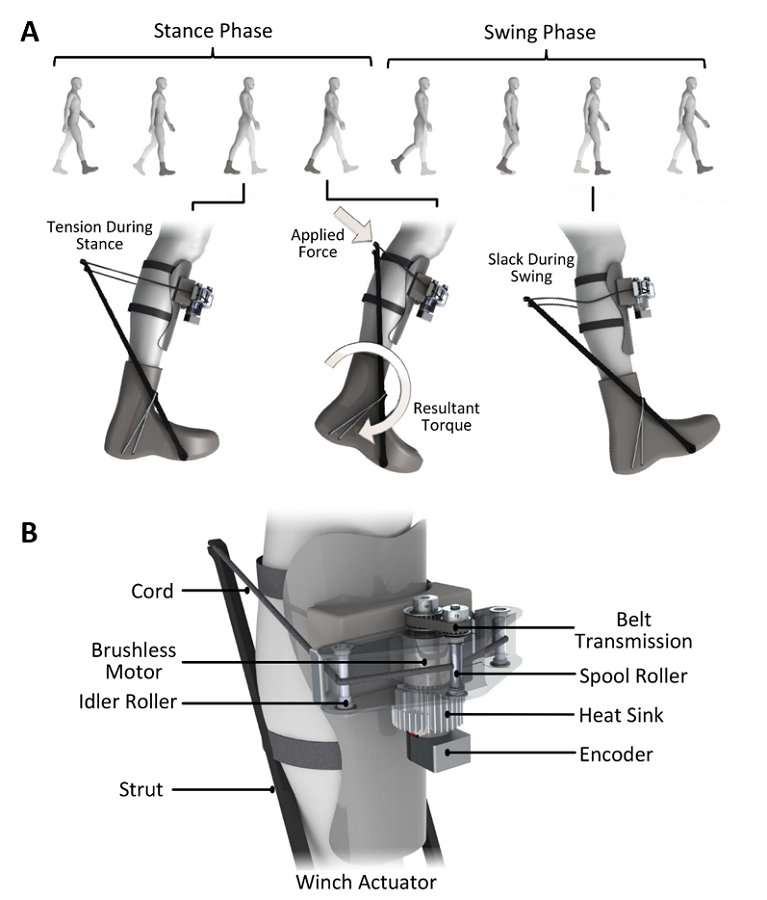 “Exoskeleton technology has been developed which boosts the strength of human legs, easing the burden of carrying heavy loads for soldiers and enabling those with disabilities to walk without support
“Exoskeleton technology has been developed which boosts the strength of human legs, easing the burden of carrying heavy loads for soldiers and enabling those with disabilities to walk without support
The exoskeleton adds power while reducing metabolic energy used, according research published in the Journal of NeuroEngineering and Rehabilitation
Scientists from MIT Media Lab, led by Hugh Herr, designed a leg exoskeleton made of two fiberglass struts attached to a walking boot, a small motor attached to each strut, and a control and battery pack worn on the waist.
The exoskeleton was tested by seven men walking on a treadmill at 90 metres per minute while wearing a 23 kg weighted vest.
The average energy used while walking with the weighted vest and no exoskeleton was 6.98 Watts/kg. Walking with the weighted suit and exoskeleton required 6.56 Watts/kg.
Hugh Herr says:
“This is the first exoskeleton that actually augments human walking and significantly reduces metabolic cost. The metabolic reduction provided by the exoskeleton is equivalent to reducing the payload by approximately 7 kg or 30% of the original payload of 23 kg. Subjects noticed that their legs felt heavier and awkward when they took the exoskeleton off.”
This exoskeleton differs from previously developed models in that it operates untethered from a power supply and it reduces energy expenditure. It works by assisting in the push-off phase of walking with the motor adding muscle-like power to the step.
Further work needs to be done on increasing the versatility and controllability of the exoskeleton models.”
Source: BusinessInsider



